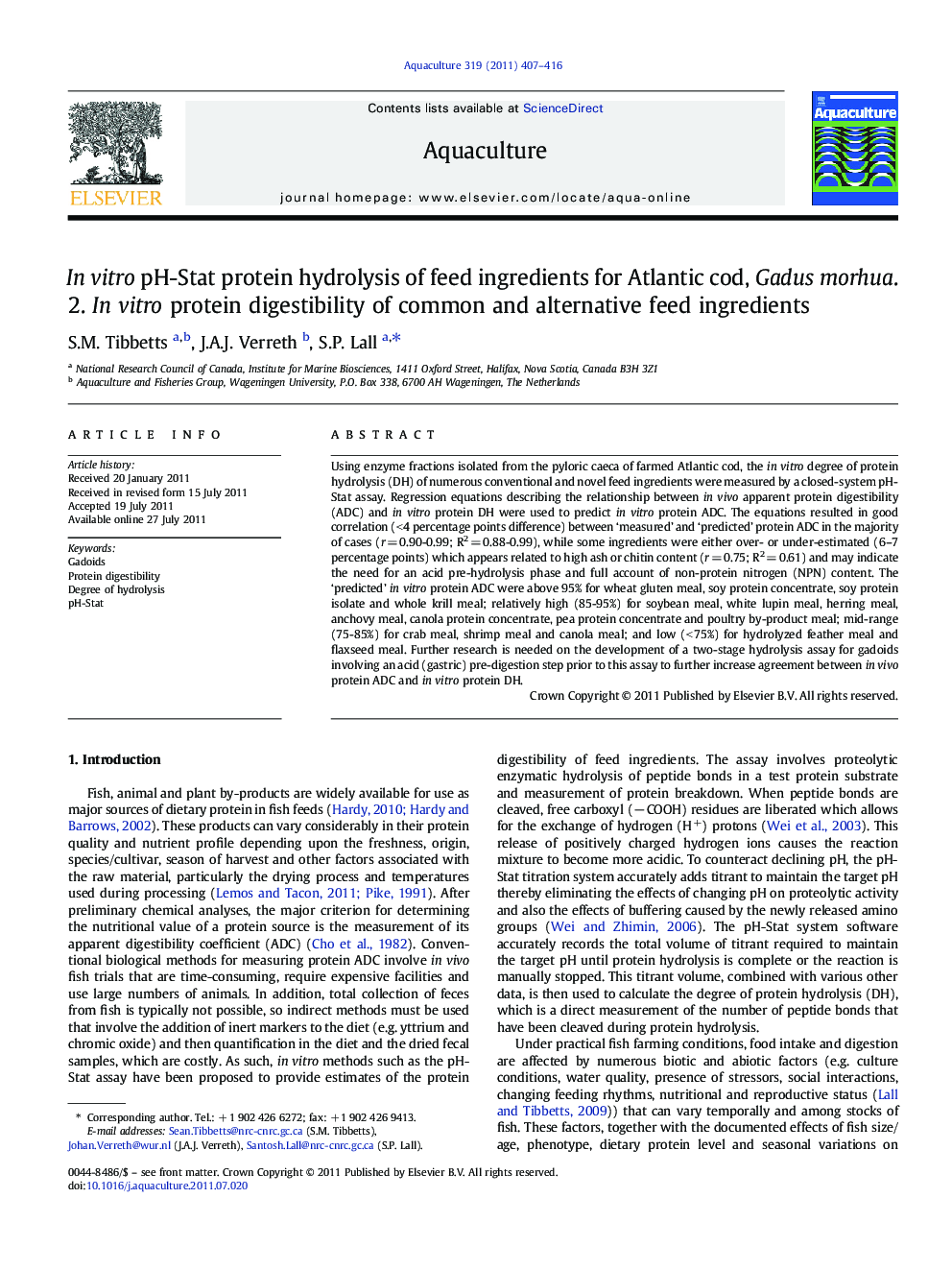| Article ID | Journal | Published Year | Pages | File Type |
|---|---|---|---|---|
| 2423002 | Aquaculture | 2011 | 10 Pages |
Using enzyme fractions isolated from the pyloric caeca of farmed Atlantic cod, the in vitro degree of protein hydrolysis (DH) of numerous conventional and novel feed ingredients were measured by a closed-system pH-Stat assay. Regression equations describing the relationship between in vivo apparent protein digestibility (ADC) and in vitro protein DH were used to predict in vitro protein ADC. The equations resulted in good correlation (< 4 percentage points difference) between ‘measured’ and ‘predicted’ protein ADC in the majority of cases (r = 0.90-0.99; R2 = 0.88-0.99), while some ingredients were either over- or under-estimated (6–7 percentage points) which appears related to high ash or chitin content (r = 0.75; R2 = 0.61) and may indicate the need for an acid pre-hydrolysis phase and full account of non-protein nitrogen (NPN) content. The ‘predicted’ in vitro protein ADC were above 95% for wheat gluten meal, soy protein concentrate, soy protein isolate and whole krill meal; relatively high (85-95%) for soybean meal, white lupin meal, herring meal, anchovy meal, canola protein concentrate, pea protein concentrate and poultry by-product meal; mid-range (75-85%) for crab meal, shrimp meal and canola meal; and low (< 75%) for hydrolyzed feather meal and flaxseed meal. Further research is needed on the development of a two-stage hydrolysis assay for gadoids involving an acid (gastric) pre-digestion step prior to this assay to further increase agreement between in vivo protein ADC and in vitro protein DH.
